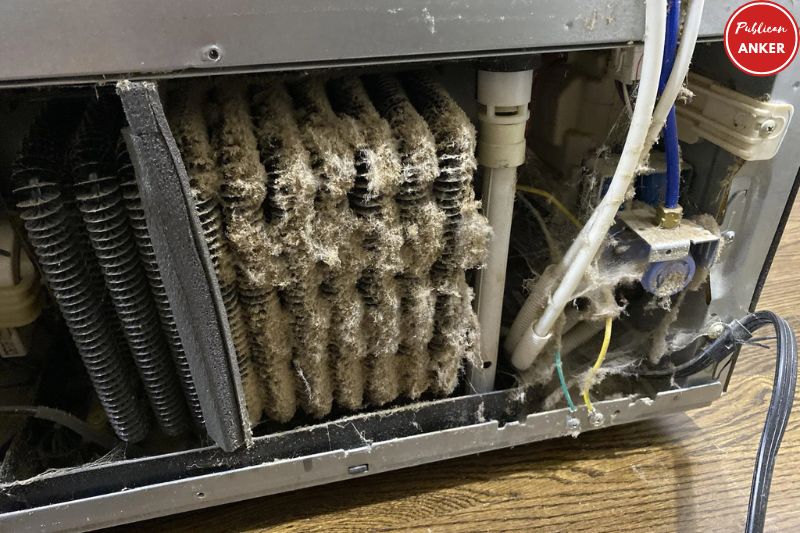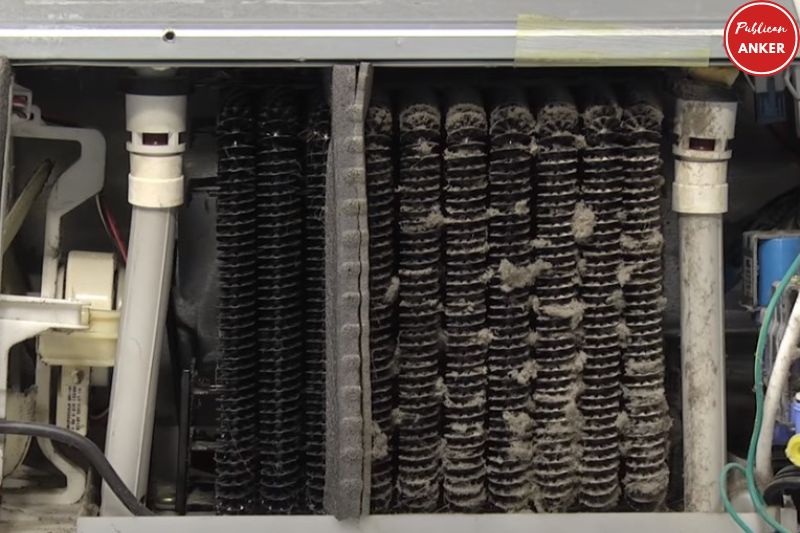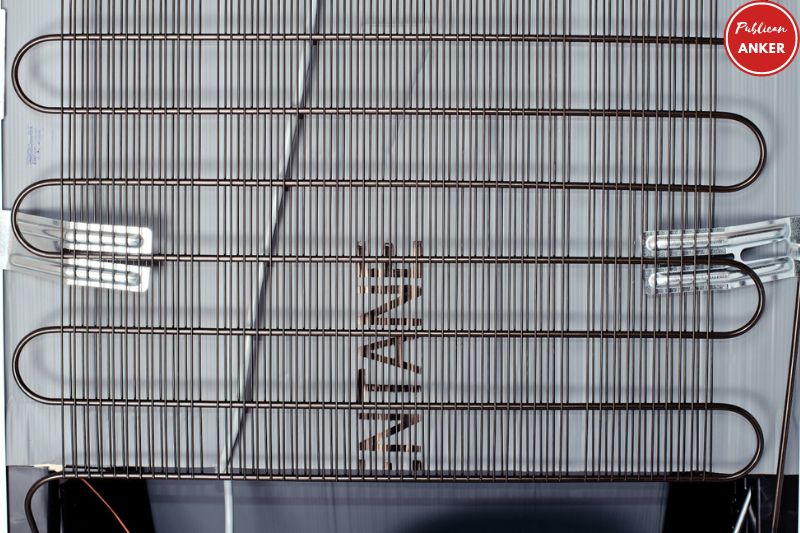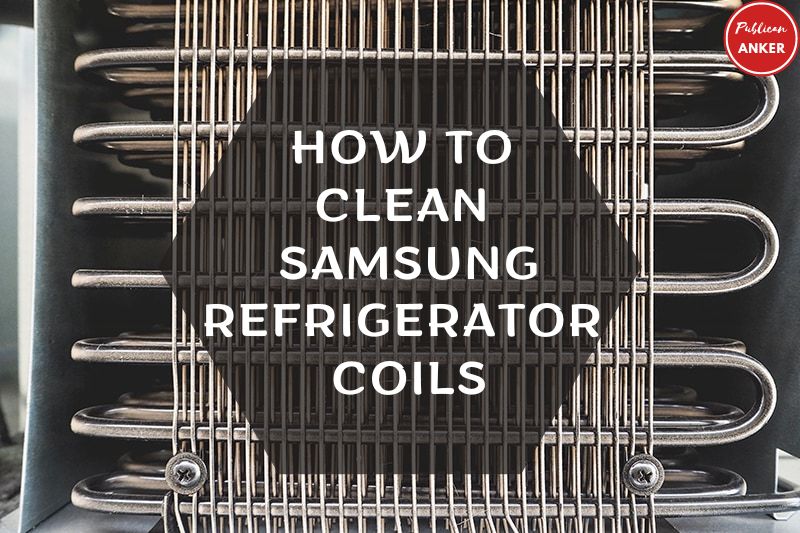What you should do when your refrigerator is too old is to Clean Refrigerator Coils. So how to clean samsung refrigerator coils correctly and quickly? Therefore, to get a result worthy of your efforts, please read this article to the end.
Here, we will guide you on how to clean the refrigerator coils in the most detailed way not to encounter basic errors. Besides, Publican Anker gives the most important notes in the process of cleaning.
Why You Should Clean Your Refrigerator Coils
The condenser coils release heat as the refrigerant flows through them. This cools the refrigerator. The coils may not cool the refrigerant efficiently if they are covered with dust and dirt.
This makes the fridge work harder, resulting in repairs, a shorter lifespan, higher energy costs, and perhaps more expensive replacements.
Avoid such issues by cleaning your Samsung refrigerator’s condenser coils every 6-12 months. If your refrigerator is not cooling properly or runs very loud, you might need to clean it more often. The steps below will help you quickly clean the coils.
Where Are Refrigerator Cooling Coils?
The location of the coil in a Samsung refrigerator may vary depending on the model and type of refrigerator. However, in most cases, the coils are located on the back or bottom of the refrigerator.
If the coils are located on the back, they will be behind a panel that can be removed by unscrewing it. If they are on the bottom, you may need to remove the grill at the front of the refrigerator and access the coils from there.
Samsung refrigerators function best when the coils are cleaned periodically. The owner’s handbook or Samsung’s customer service can help you find your model’s coils.
How Dirty Coils Affect Refrigerator Performance

Two sets of coils are found in a refrigerator. They are located at opposite ends. A condenser force refrigerant through condenser coils to an extension valve as a liquid. This small opening is similar to a spray nozzle.
Evaporative coils evaporate liquid that passes through. This change of state absorbs air heat and cools surrounding coils like sweat evaporation cools the body. A check valve returns refrigerant to the condenser chamber, restarting the cycle.
The evaporative coils can be found behind the freezer compartment. They can ice over, but they don’t collect dust, so they don’t require cleaning.
Condenser coils, however, are another matter. The condenser coils must be placed near the condenser. The condenser generates heat. The coils heat up during normal operation.
To cool them off, the manufacturer provides a fan. However, the fan’s air contains pet hair, dust, and grease. The coils collect the debris.
The condenser coils are protected from the elements by dust. Cleaning the coils regularly prevents condenser overheating and failure. Food might deteriorate when the fridge condenser stops working.
Even “Never Clean” Condenser Coils Need TLC

Even if the refrigerator says “Never Clean Condenser Coils,” clean the housing. This cage-like enclosure circulates air from your ventilation fan to clean the coils.
Although dust does not collect on the coils, it can collect on the housing and cause problems with air circulation. The housing doesn’t need to be cleaned as often as the exposed coils. It should only be cleaned every two years.
The Never Clean condenser can be found underneath the refrigerator. It is accessible by removing the refrigerator from the wall and unplugging the unit. You can also remove the back panel with a few screws.
To clean the housing, use a vacuum that has a crevice attachment. A coil brush is best as it can force dust into the housing and onto the coils.
After vacuuming the housing, you might want to clean it with a damp cloth. After you are done, you can replace the back panel and push the fridge back against the wall.
How to Clean Samsung Refrigerator Coils Quickly and Easily
It doesn’t require a lot of equipment or time to clean Samsung coils. You will only need a narrow vacuum hose attachment, a dust mask, and an appliance brush to complete the task in minutes. Before we explain how to clean condenser tubes, let’s first discuss why it is so important.
Step 1: Unplug the Refrigerator
First, disconnect the fridge from its power source. This will ensure that you are safe before you start working. To avoid dust inhalation, make sure you put on your dust mask when unplugging your refrigerator.
Step 2: Locate the Refrigerator Coils
What are the locations of condenser coils in Samsung models? The majority of coils are found in one or more of these locations:
- Behind a rear panel, in the back of the refrigerator.
- Under the refrigerator doors, there is a lower grille.
- An upper grille protects the refrigerator.
Refer to your owner’s guide for the exact location of condenser coils on your refrigerator model.
Step 3: Vacuum the Coils
Once you have located the coils, use the narrow hose vacuum attachment to vacuum up any visible debris. It would help if you vacuumed both the coils and the surrounding area.
Step 4: Use an Appliance Brush
To clean difficult-to-reach places, use the flexible appliance brush. You can also remove any dust or debris between the coils.
Step 5: Vacuum Remaining Debris
To remove any debris, the brush might have left behind, vacuum the coils and the surrounding area once more. Vacuum the area around the fridge as well.
Step 6: Reposition Refrigerator
Repositioning your Samsung is the final step in cleaning its refrigerator coils. If your coils were located behind a panel at the rear, you can replace it, plug the fridge in, and then move it back into place. Replace the front grille if the coils were behind a rear panel.
A refrigerator repair might be necessary if your refrigerator continues to not cool down after coil cleaning. Appliance King can assist with any repair.
You can watch the video here:
Quick Note
Important to remember that evaporator coils rarely need to be cleaned. They are protected from dust and dirt, so they don’t get exposed to the elements. They can be hidden behind the freezer walls to cool the area.
Condenser coils are coils that get dirty easily and need to be cleaned. Because they are located behind or below the unit, this is why they tend to get dirty. This is true even if they aren’t within the walls.
This article covers cleaning Samsung refrigerator evaporator cells for all models.
Before cleaning the condenser or evaporator coils, unplug your refrigerator. This is an essential first step to safety, as it prevents electrocution.
Relevant Posts For You:
- Samsung Refrigerator Noise Stops When Door Open
- How To Remove Smell From Refrigerator
- How To Dispose Of Refrigerator Top Full Guide 2023
- How To Organize Refrigerator Top Full Guide 2023
- How To Move A Refrigerator Top Full Guide 2023
- How To Clean Refrigerator Coils Top Full Guide 2023
- How To Clean Refrigerator Top Full Guide 2023
FAQs

How often should the coils on the refrigerator be cleaned?
It would help if you cleaned your refrigerator coils at least once a year to keep them humming. If you have pets that shed, this may be more frequent.
Where Is the Evaporator Coil on a Samsung Refrigerator?
You will find the evaporator coil in the freezer section of a Samsung. It can be found behind the freezer section’s rear wall. The coil, fan, heater, and other components are located behind the panel once you have removed it.
What happens if refrigerator coils are dirty?
The coils won’t release heat efficiently if they are blocked with dust and dirt. This makes your compressor work harder and last longer, wasting energy and shortening your fridge’s lifespan. Use a coil cleaning brush to clean the coils.
Where Is the Samsung Freezer Evaporator Coil Located?
The evaporator coil will be under the floor or wrapped around the chest freezer’s sides, front, and rear if needed. The fridge freezer’s evaporator coil is behind the freezer.
Like condenser coils, some upright freezers contain evaporator coils on their top, sides, and back.
What causes a Samsung refrigerator to stop cooling?
A faulty fan motor in the evaporator is one of the main reasons Samsung refrigerators do not cool. It draws cold air into the refrigerator’s evaporator coils. It can fail, and the fridge won’t cool down enough cold air.
What would the symptoms of a dirty coil be?
The AC will not produce as cold air as it should if the coil becomes dirty. The cooling process’ efficiency is affected if heat transfer is decreased. Check the evaporator coil to see if the AC isn’t cooling your air.
Conclusion
You will quickly realize how important it is to clean the coil of your refrigerator. It is important to clean the coil, but it can also help reduce the chance of the fridge being damaged. Publican Anker believes you can do it yourself, based on the guidelines. Good luck!
Leave a review in the comments section below after a successful implementation. Publican Anker will use your reviews to improve and develop the quality of each article.
